Forget the Recipes: The Real Secrets to an Unforgettable Burger
I’ve spent a long, long time working both behind a butcher counter and on the line in busy kitchens, and let me tell you, I’ve seen every burger mistake in the book. It’s a familiar story: someone comes in, buys the leanest ground sirloin they can find, and then wonders why their burgers are as dry and crumbly as a sandbox. Or they work the meat like it’s bread dough and then complain that the patty is tough enough to be a hockey puck.
In this article
So, let’s get one thing straight. A truly phenomenal burger isn’t about some secret, complicated recipe. It’s about getting a few key ideas right. Honestly, once you understand the ‘why’ behind the process, you’ll be able to build your own perfect burger, every single time, no recipe needed.
This is the stuff that separates a forgettable backyard burger from one that people are still talking about weeks later. Ready?
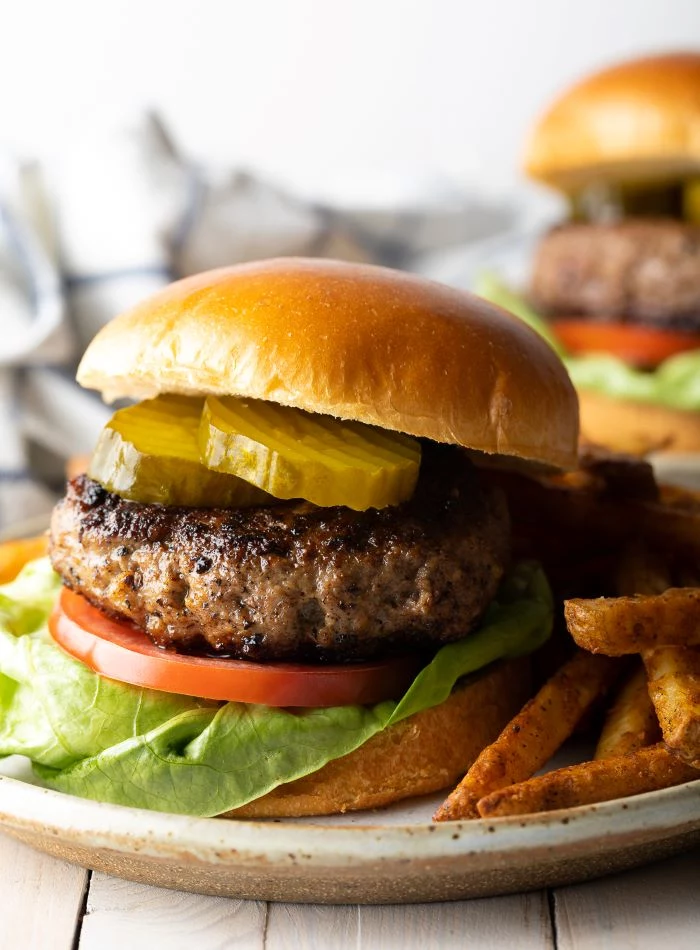
It All Starts with the Meat
The single most important choice you’ll make is the meat. This is the heart and soul of your burger. All the flavor, the texture, and that incredible juiciness starts right here. In a pro kitchen, we don’t just grab a generic package of ground beef; we’re super specific about the cut, the fat, and the grind.
Choosing Your Cut
Different cuts of beef bring different things to the party. The undisputed champion for a classic, mind-blowing burger is chuck.
Chuck steak comes from the shoulder. It’s a muscle that does a lot of work, which means it’s absolutely packed with beefy flavor and connective tissue that makes for a tender bite once it’s ground. Plus, it has a nearly perfect natural fat content.
But hey, you can get creative! Here are a few other fantastic options:
- Brisket: If you want a burger that’s incredibly rich and juicy, brisket is your friend. It has a very generous fat content that just melts into the patty, giving it an amazing mouthfeel.
- Short Rib: This is the luxury choice. It’s intensely marbled and adds a buttery, almost decadent flavor that can elevate your burger to steakhouse levels.
- Sirloin: To be frank, I almost never use sirloin by itself. While it has a good, clean beef flavor, it’s just too lean. You’ll almost always end up with a dry burger. If you use it, you HAVE to blend it with something fattier.
At the shop where I learned the ropes, our go-to house blend was about 50% chuck, 25% brisket, and 25% short rib. This gave us that classic beefiness, the rich fat, and a touch of buttery goodness. If you have a good butcher nearby, don’t be afraid to ask for a custom blend! Expect to pay a bit more for it, probably in the $8 to $12 per pound range, compared to standard ground chuck which is usually $5 to $7 per pound. For a special occasion? Totally worth it.
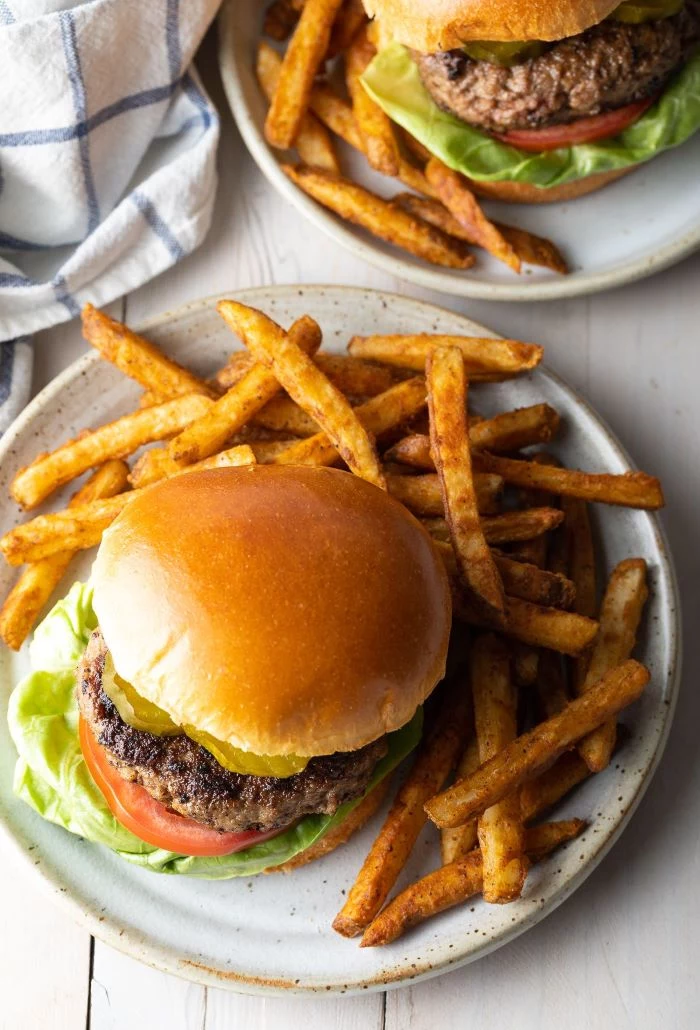
Quick tip for the rest of us: If you’re at a regular supermarket, just look for a package labeled “80/20 Ground Chuck.” Steer clear of anything marked “Ground Round” or “Ground Sirloin” for burgers—they won’t have the fat you need.
The 80/20 Rule is Law
Let me be perfectly clear: fat is not the enemy. Fat is flavor. Fat is moisture. Without enough of it, your burger is doomed from the start. The gold standard, for very good reasons, is an 80/20 lean-to-fat ratio. That means 80% lean meat, 20% fat.
When the burger cooks, that fat renders and basically bastes the meat from the inside out, keeping it unbelievably juicy. All the best flavor compounds in beef are fat-soluble, meaning the fat is what carries that rich taste through the whole patty.
I’ve seen it a hundred times—people proudly grabbing 93/7 lean ground beef to be “healthy.” The result is always a tight, dry, crumbly patty that tastes more like sad meatloaf. On the flip side, going too fatty (like 70/30) can cause the patty to shrink a ton and cause massive, bitter-tasting flare-ups on the grill. Stick to 80/20. It’s the magic number.
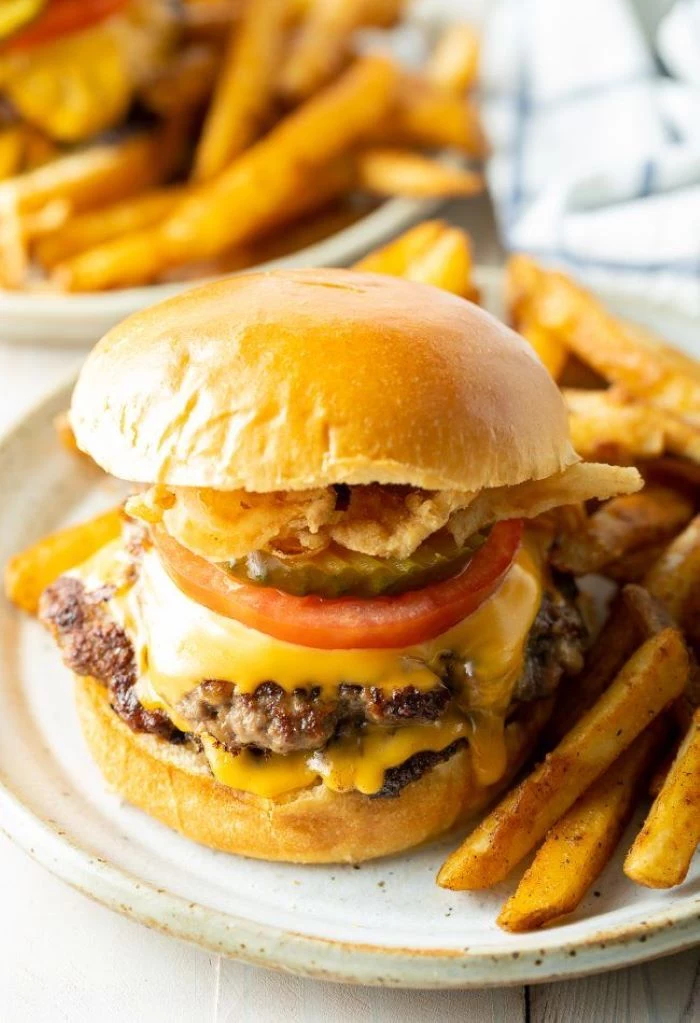
Why the Grind Matters
How the meat is ground seriously affects the final texture. Most of what you find in supermarkets is passed through a fine grinding plate, sometimes more than once. This can create a texture that’s dense and a little pasty.
For a truly tender, steak-like bite, a coarser grind is way better. It creates a looser patty with more little air pockets, which trap all those amazing juices. If you have a stand mixer with a grinder attachment, I highly recommend doing it yourself. It’s a game-changer.
Heads up on safety! If you grind at home, temperature is everything. Pop your cuts of beef, the metal grinder parts, and the bowl you’re using into the freezer for at least 30 minutes before you begin. Keeping everything ice-cold prevents the fat from smearing and, most importantly, keeps bacteria from growing. Work fast and get the ground meat back into the fridge right away.
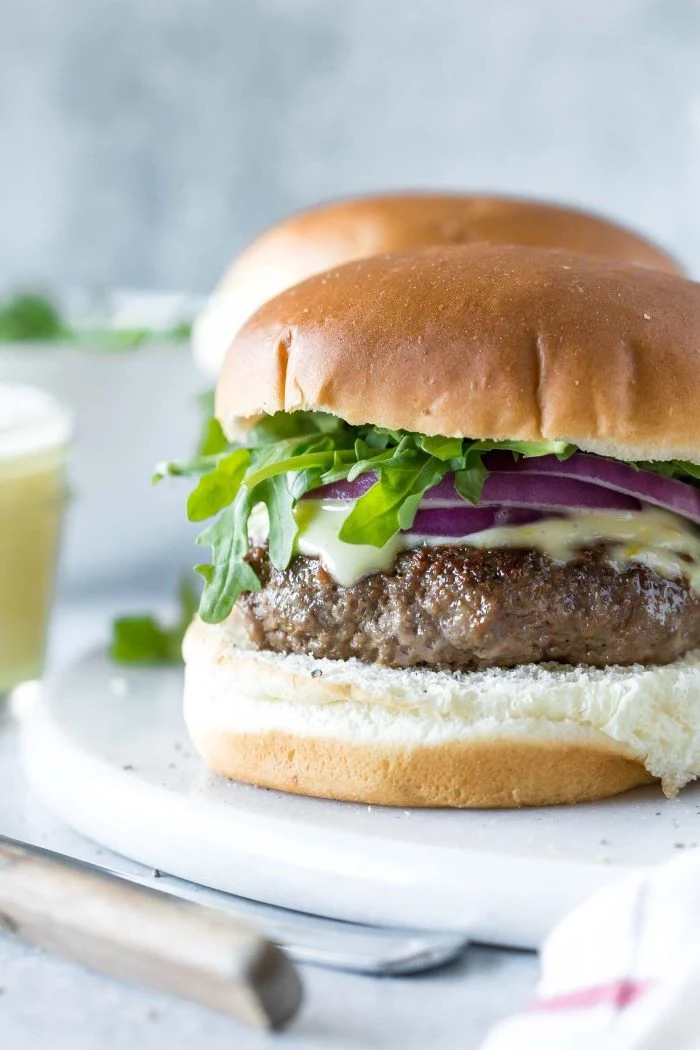
How to Handle and Shape the Meat Like a Pro
This is where most people mess up. How you form the patty is just as crucial as the meat you choose. The mission is a tender, juicy interior, not a dense, rubbery disc.
Rule #1: Less is More
Overworking ground meat is the fastest way to ruin it. When you knead and mash it, you’re developing the proteins, which makes the texture tough and springy—more like a sausage. A great burger should be tender and almost fall apart in your mouth.
So, when you have your ground meat, just gently break it apart and form it into a patty with a light touch. You’re just trying to convince it to hold its shape, not force it into submission.
The Dimple Trick (and Other Shaping Tips)
- Weigh it out. For consistent cooking, use a kitchen scale. I like 6-ounce patties for a standard burger, and maybe 8 ounces for a big pub-style one.
- Go wider than the bun. Patties shrink! I always make my raw patties about an inch wider than my bun. It looks a little silly at first, but it’ll be the perfect size once it’s cooked.
- The Dimple. This is the secret. Once you’ve formed your patty, use your thumb to press a shallow dent into the center. As the burger cooks, the edges contract and push the center up into a dome. The dimple counteracts this, keeping the patty nice and flat for even cooking.
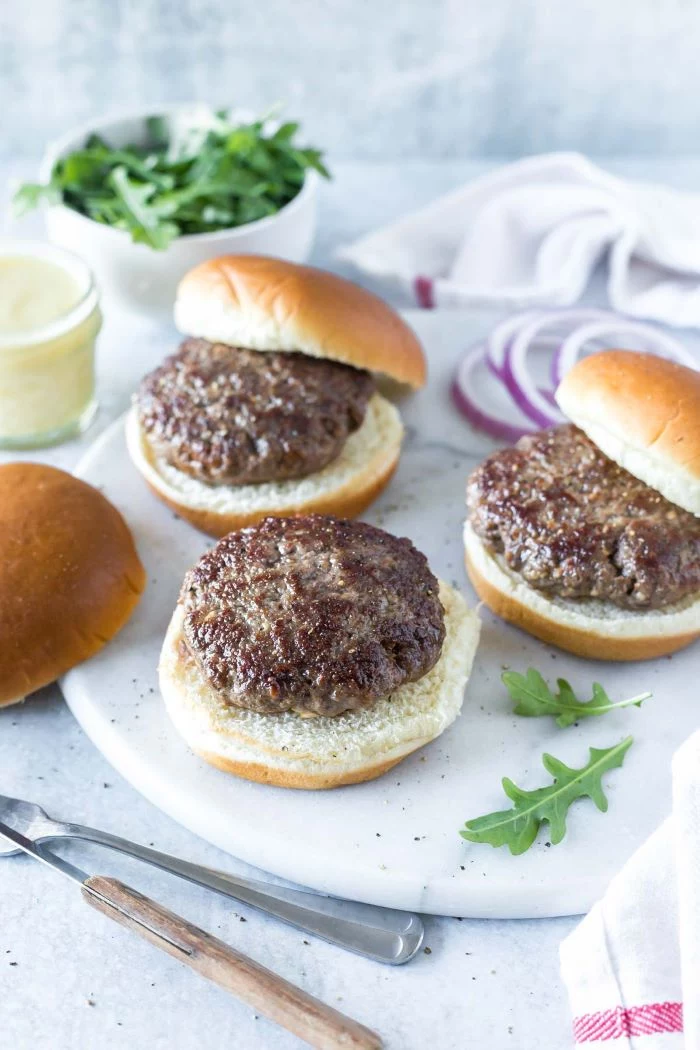
The Great Seasoning Debate
Some people mix salt and pepper right into the ground meat. I’m not a fan. Salt starts to break down the meat proteins and can give the burger that same sausage-like, springy texture we’re trying to avoid.
Here’s the steakhouse method: form your patties completely plain. Then, right before they hit the heat, season the outside of the patty generously with coarse salt and black pepper. This keeps the interior tender and helps create an incredible, flavorful crust on the outside. It’s a small detail with a huge impact.
Common Burger Mistakes (And Easy Fixes)
Before we fire up the grill, let’s cover the three most common screw-ups I see.
- The Mistake: My burger puffed up into a baseball.
The Fix: You forgot the dimple! That little indent is your best friend for a flat, evenly cooked patty that holds toppings well. - The Mistake: I pressed down on my burger with the spatula.
The Fix: Please, for the love of all that is delicious, don’t do this! That sizzling sound is the sound of all the juice and flavor leaving your burger and hitting the coals. Let the heat do the work. - The Mistake: My burger was dense and tough.
The Fix: You overworked the meat. Remember, be gentle. Your goal is to just barely form a patty, not to knead it like dough.
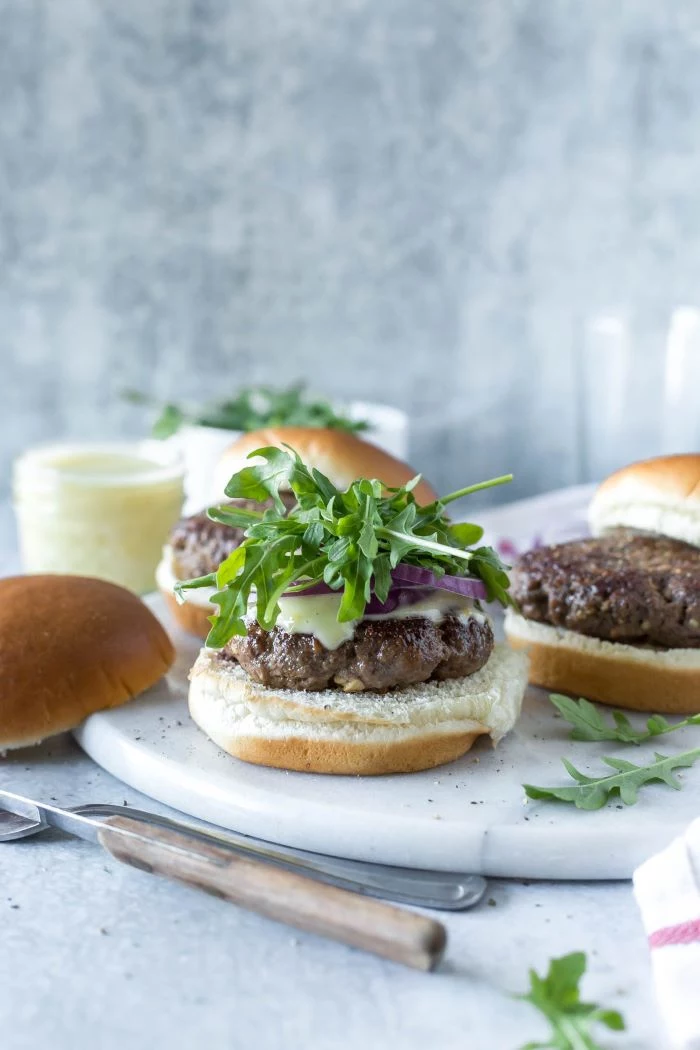
Time to Cook: Grill vs. Pan
Your cooking method determines the final character of the burger. Both grilling and pan-searing are amazing, just different.
Grilling Like a Champ
The secret to grilling is a two-zone fire. This just means one side of your grill is hot, and the other side is not. It’s easy to set up:
- On a gas grill: Turn half your burners on high and leave the other half off.
- On a charcoal grill: Pile all your hot coals over on one side.
Sear your seasoned patties on the hot side for 2-3 minutes per side to get that awesome crust. If they need more time to cook through (especially for thicker patties), move them over to the cooler side to finish without burning. And if you get a flare-up from dripping fat, just move the burger to the cool zone for a second until the flames die down.
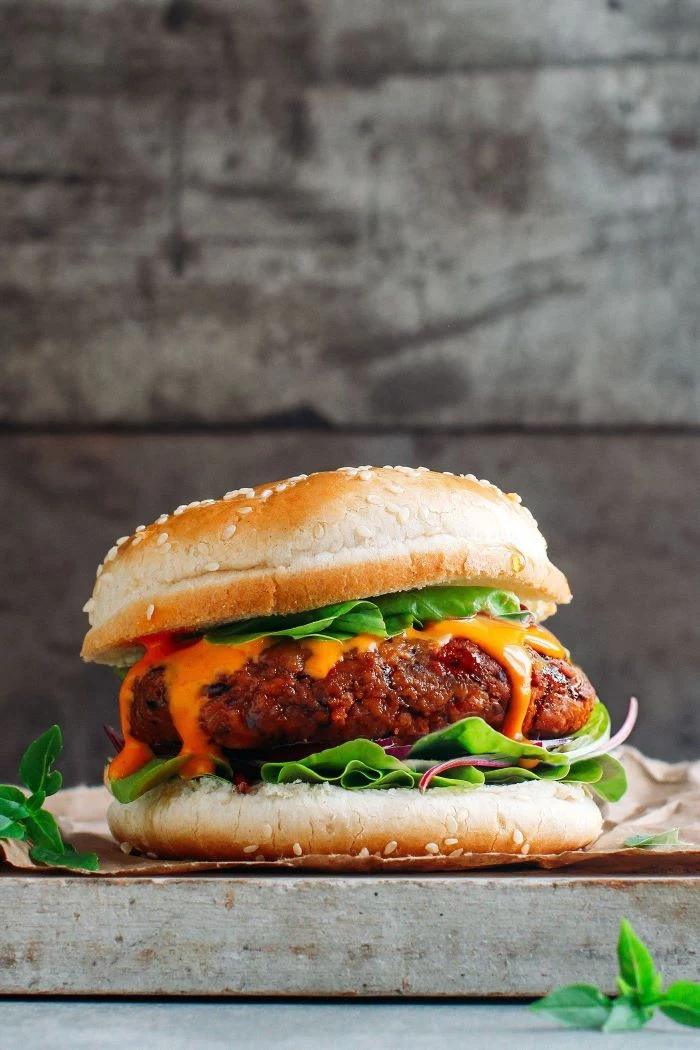
Pan-Searing and the Mighty ‘Smash’ Burger
For the absolute best crust, nothing beats a cast-iron skillet. The ‘smash’ burger technique is popular for a reason: it’s incredible. Instead of a pre-formed patty, you start with a loose ball of meat (4 ounces is great for this).
Get your cast-iron pan ripping hot. What does that mean? Heat it until a drop of water sizzles and evaporates almost instantly. That’s the sweet spot right before it starts to smoke. Place the ball of meat in the pan and, using a sturdy metal spatula, smash it down firmly into a thin patty. That incredible sizzle is the sound of a perfect crust forming. Since it’s so thin, it cooks in just a minute or two per side, staying super juicy inside.
Doneness and the One Tool You Need
This is non-negotiable. The ONLY reliable way to check if a burger is done is with an instant-read digital thermometer. Color is not a trustworthy guide. For safety, ground beef should be cooked to an internal temperature of 160°F (71°C).
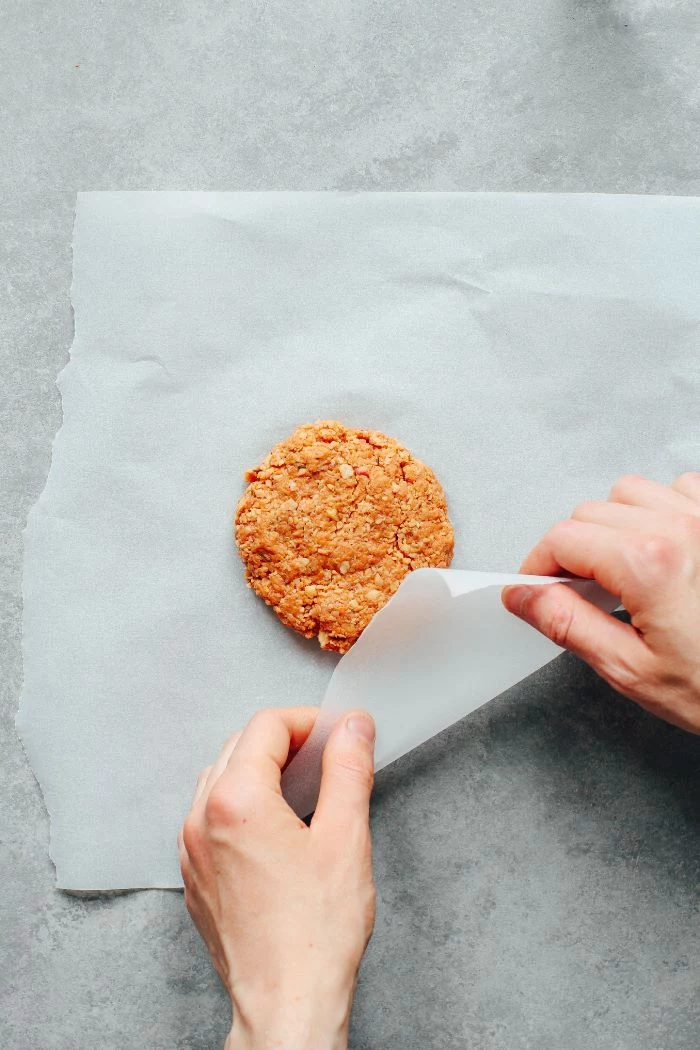
You don’t need a fancy $100 gadget. A model like the ThermoWorks ThermoPop costs around $25-35 online and is a total game-changer for all your cooking. To get an accurate read, insert it horizontally into the side of the patty. Pro tip: I pull my burgers off the heat at 155°F and let them rest for a few minutes. They’ll continue to cook and reach the safe temperature while staying perfectly juicy.
Branching Out: Lamb, Turkey, and Veggie Burgers
Once you’ve mastered beef, you can apply these ideas to other proteins.
Spiced Lamb Burgers: Lamb is naturally rich and fatty, so it makes a great burger. It loves bold spices like cumin and coriander. Unlike beef, I do like to mix these spices right into the ground lamb to infuse the whole patty.
Fixing the Dry Turkey Burger: Turkey burgers are notoriously boring because they’re so lean. You have to add fat and moisture back in. My go-to trick is a ‘panade.’ For every pound of ground turkey, mix about 1/4 cup of panko breadcrumbs with 2-3 tablespoons of milk or buttermilk. Let that sit for 5 minutes to form a paste, then gently mix it into the turkey with your seasonings. This keeps it so much more moist!
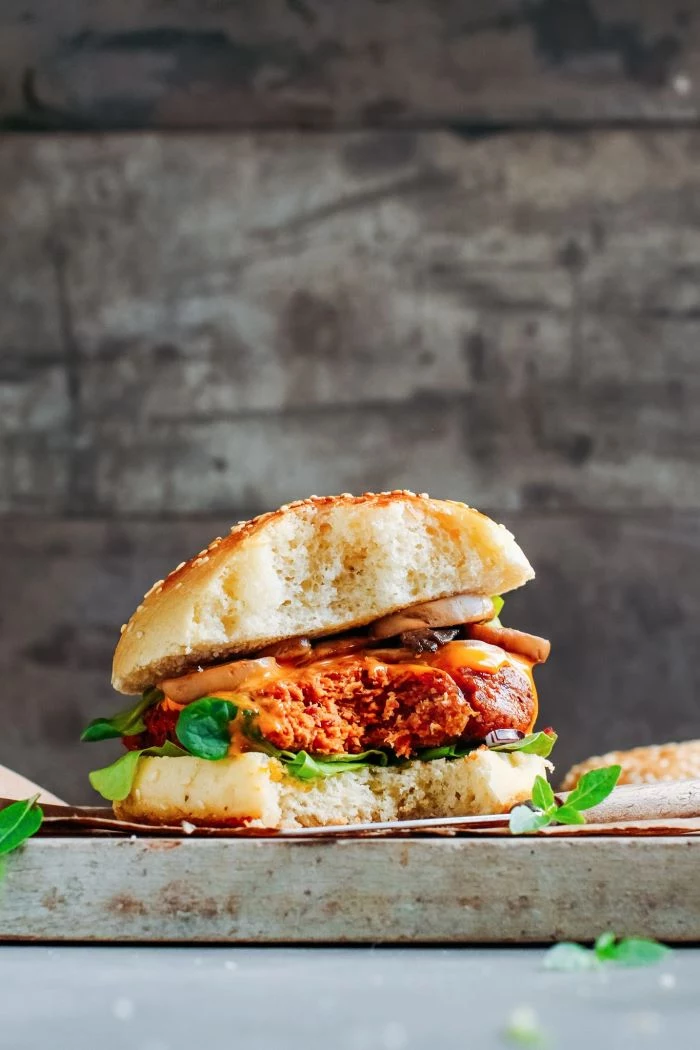
Building a Better Veggie Burger: A great veggie burger is all about structure and flavor. For structure (the ‘binder’), you can use things like a ‘flax egg’ (ground flaxseed and water), cooked rice, or breadcrumbs. For flavor, you need to build savory, umami notes with ingredients like soy sauce, tomato paste, nutritional yeast, and lots of sautéed mushrooms and onions. Good to know: most homemade veggie patties are too delicate for the grill; they do much better in a pan.
The Final Assembly
Don’t let a perfect patty down with a weak finish. Every component matters.
- The Bun: A soft potato roll or a buttery brioche bun are top-tier choices. But the most important step? Toasting it. A quick swipe of butter or mayo on the cut sides, toasted until golden, adds flavor and creates a barrier to stop the bun from getting soggy.
- The Cheese: For pure, melty perfection, American cheese is king. Its emulsifiers help it melt into a creamy blanket without getting greasy. For more flavor, try sharp cheddar or Swiss. Add the cheese during the last minute of cooking and close the grill lid to get a perfect melt.
- The Stack: There’s a logic to this! My method protects the bun. From the bottom up: sauce on the bottom bun, then a big leaf of lettuce (as a moisture shield), then your hot cheesy patty. Wet toppings like tomato and pickles go on top of the meat so their juices run over the patty, not into the bun.
Ultimately, a burger is a personal journey. But if you get the fundamentals right—good meat with enough fat, gentle handling, and smart cooking—you’ll have the power to create something truly special. Now go build your masterpiece.
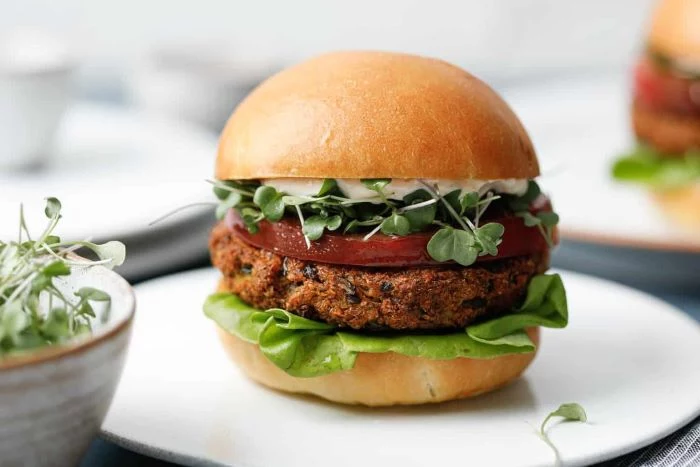
Inspirational Gallery
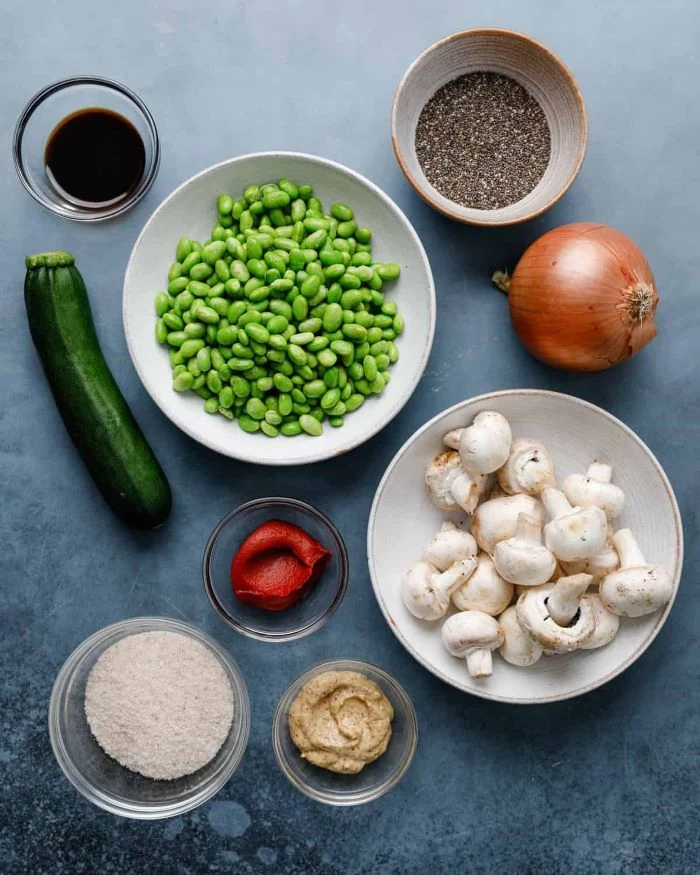
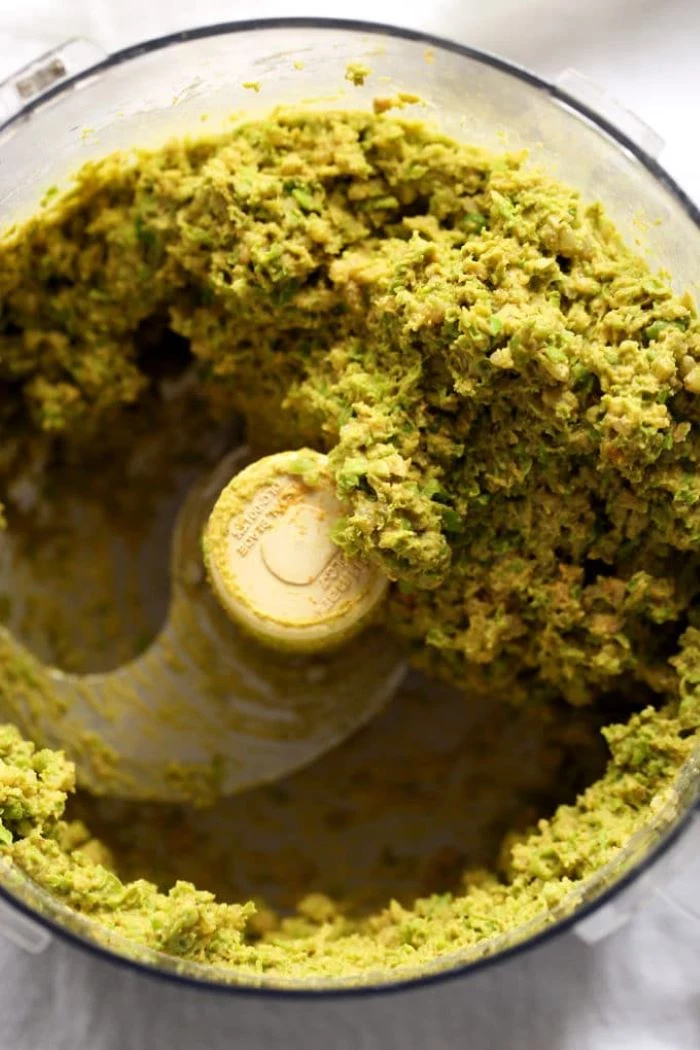
The Maillard reaction, the chemical process responsible for the delicious, deep brown crust on a burger, only begins in earnest at temperatures above 140°C (285°F).
This is why a screaming hot pan is non-negotiable. Don’t be timid with the heat! That initial, aggressive sear is what locks in juices and develops the complex, savory flavors that separate a steamed, grey patty from a steakhouse-quality burger. A heavy-bottomed cast-iron skillet, like a classic from Lodge, is your best friend here.
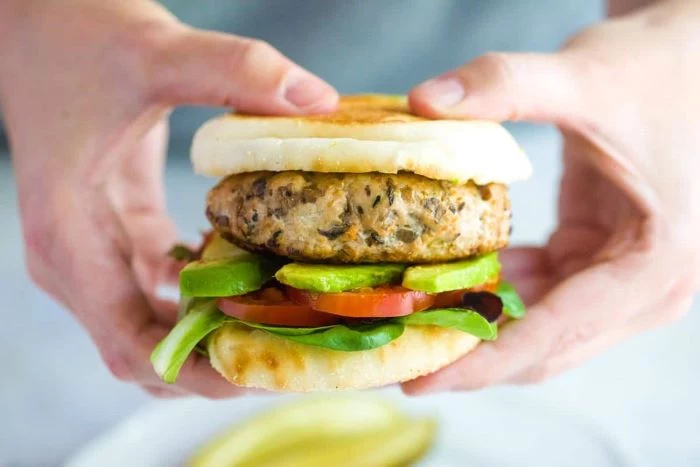
Ever wonder why diner burgers taste so different? The secret is often in the smash. For that perfect, lacy-edged crust, you need a few key items. It’s less about a recipe and more about the right gear.
- A heavy, flat spatula: Not a flimsy plastic one. You need steel to apply real pressure.
- A ball of cold ground beef: About 80/20 chuck, loosely formed, not a pre-made patty.
- Parchment paper: A small square placed on the ball of meat prevents the spatula from sticking.
- A blazing hot, un-oiled surface: The fat from the beef is all you need.
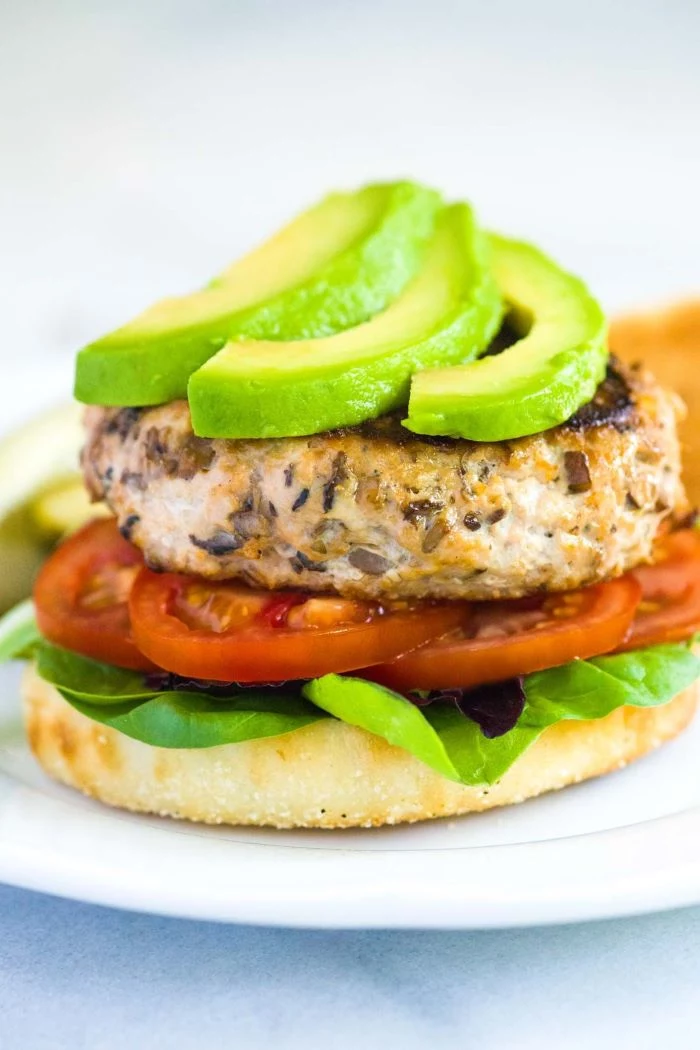
The Golden Rule of Juiciness: Once your burger is cooked, let it rest for a few minutes before serving. This allows the juices, which have been driven to the center of the patty by the heat, to redistribute throughout the meat. Cutting into it too soon will result in a flood of flavor lost to the plate instead of your palate.

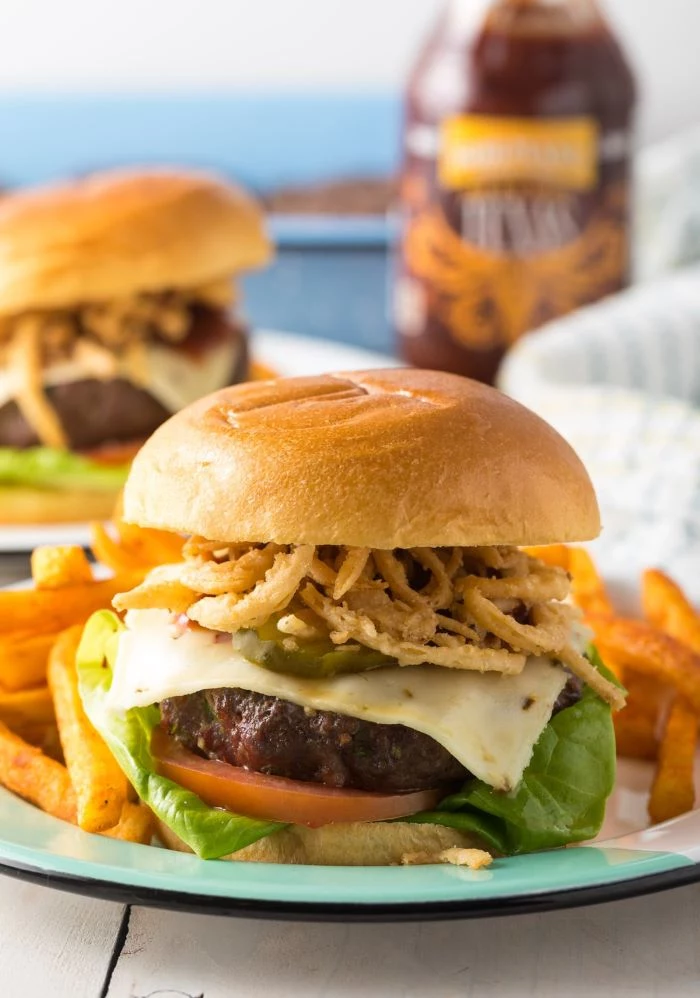
The choice of bun is as critical as the choice of meat. It’s the vessel for all that juicy goodness. A flimsy bun will disintegrate into a soggy mess. For a classic, all-American experience, nothing beats the slight sweetness and pillowy texture of a Martin’s Potato Roll. For a richer, more decadent burger with lots of toppings, a sturdy brioche bun that has been buttered and toasted is essential to stand up to the challenge.
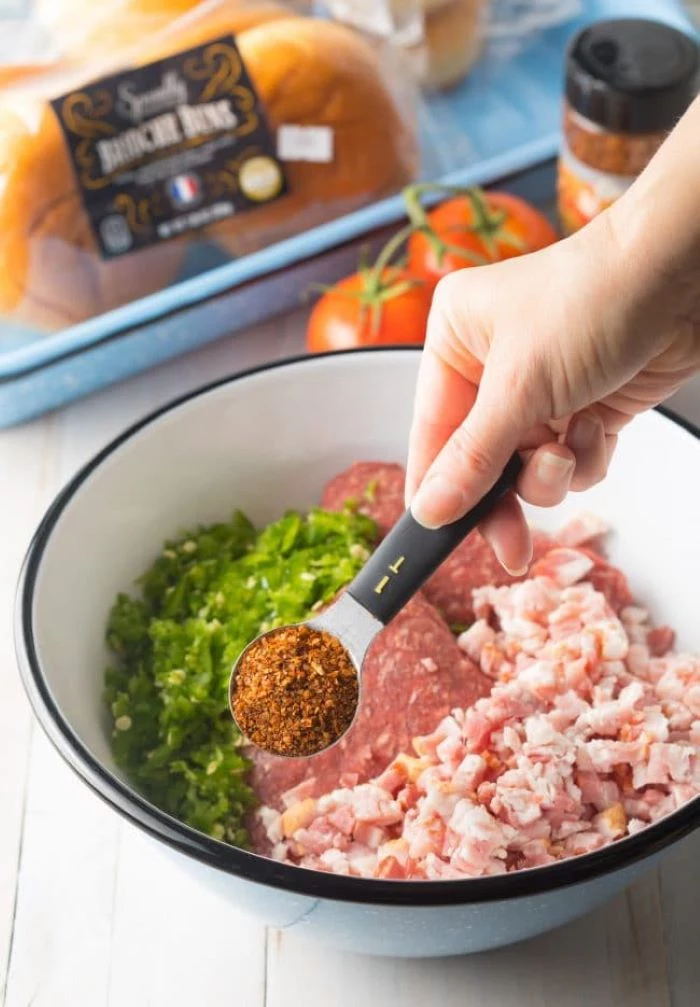
How do I get that perfect, gooey cheese melt every single time?
It’s a simple two-step trick. Add the cheese slice during the last minute of cooking, right on the patty in the pan. Then, add a tiny splash of water (a tablespoon is plenty) to the pan *next* to the burger and immediately cover it with a lid or a metal bowl. The trapped steam creates a mini-sauna, melting the cheese evenly and beautifully in about 30 seconds.
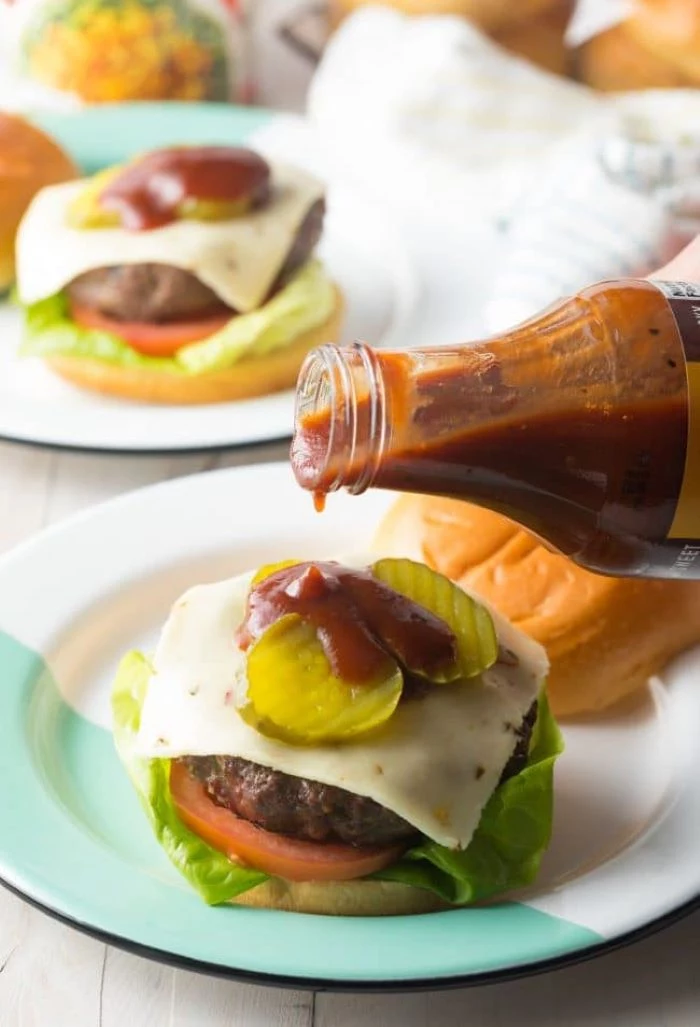
According to a 2021 Mintel report, 33% of consumers who eat burgers agree that plant-based burgers are a healthier alternative to meat.
When cooking plant-based patties like those from Impossible Foods or Beyond Meat, remember they behave differently. They often brown faster due to their composition, so keep a close eye on them. They also benefit immensely from the same flavor-building techniques: a hot sear, proper seasoning, and a great toasted bun.
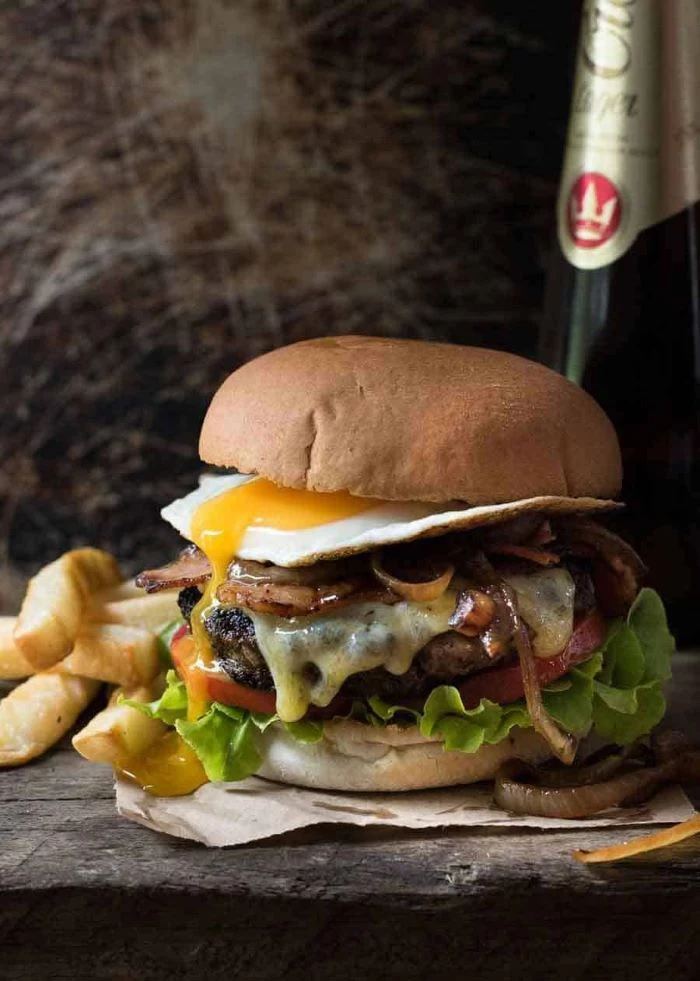
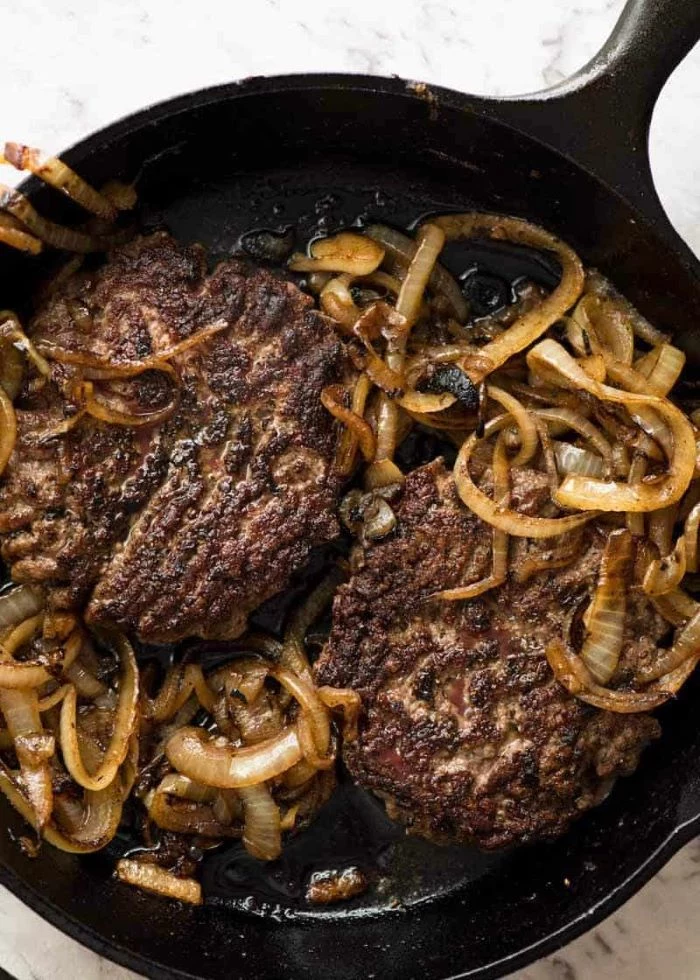
- A crisp, stable foundation.
- Sauce on both buns to ensure flavor in every bite.
- Lettuce acting as a barrier to prevent the bottom bun from getting soggy.
The secret? A logical stacking order. Most pros build from the bottom up: toasted bun, sauce, lettuce, tomato, the patty with cheese, onions or pickles, and finally the top bun with more sauce.
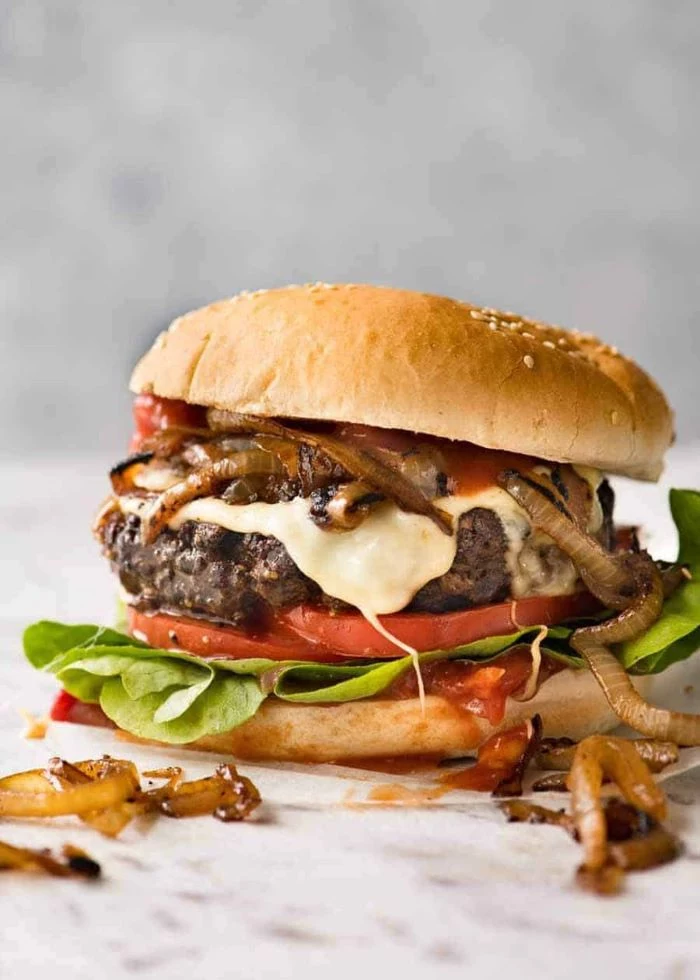
American Cheese: It’s engineered to melt. Its low melting point and emulsifying salts mean it drapes over a patty in a smooth, creamy blanket without splitting or becoming greasy. It’s the undisputed champion for pure meltability and nostalgic flavor.
Aged Cheddar: This brings a sharp, complex flavor to the party, but it can be finicky. It has a higher melting point and is more likely to ‘break’ and release oil. For best results, use a younger cheddar or grate it finely before adding it to the patty.
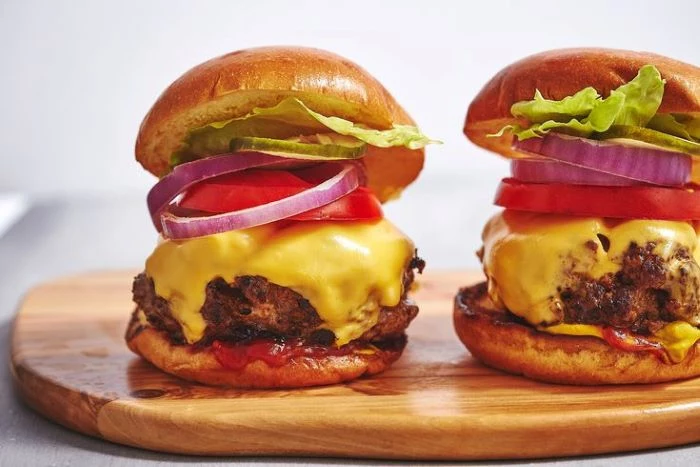
One of the biggest mistakes home cooks make is pressing down on the burger with a spatula while it’s cooking. That satisfying sizzle you hear? That’s the sound of all the precious juices and fat—the very essence of a great burger—being squeezed out onto the flames or into the pan. Handle the patty as little as possible. Flip it once, and let it be.
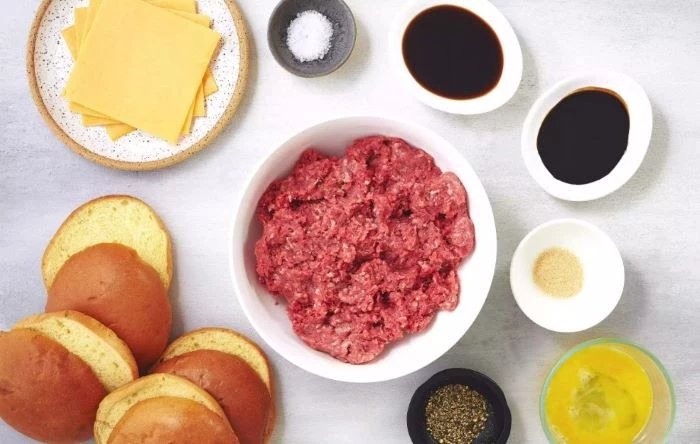
Building a signature sauce is easier than you think. Start with a quality base and then add your own twist for a truly custom burger.
- The Base: Begin with a 2:1 ratio of good mayonnaise (like Duke’s or Kewpie) to ketchup.
- The Zing: Add a dash of Dijon mustard and a splash of pickle brine or white vinegar for acidity.
- The Depth: A pinch of smoked paprika, garlic powder, and a tiny bit of Worcestershire sauce adds umami and complexity.
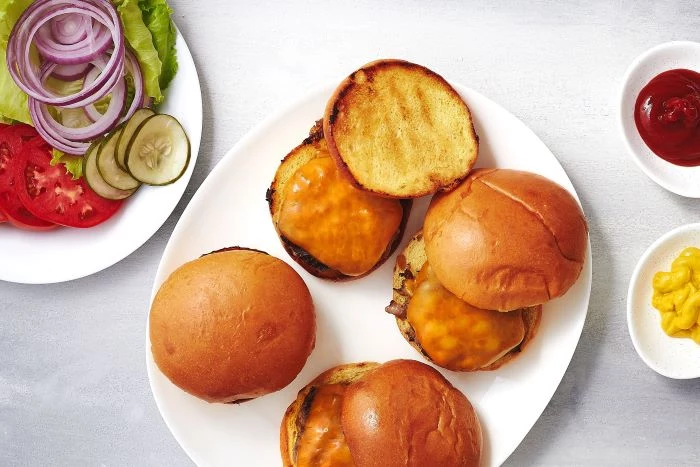
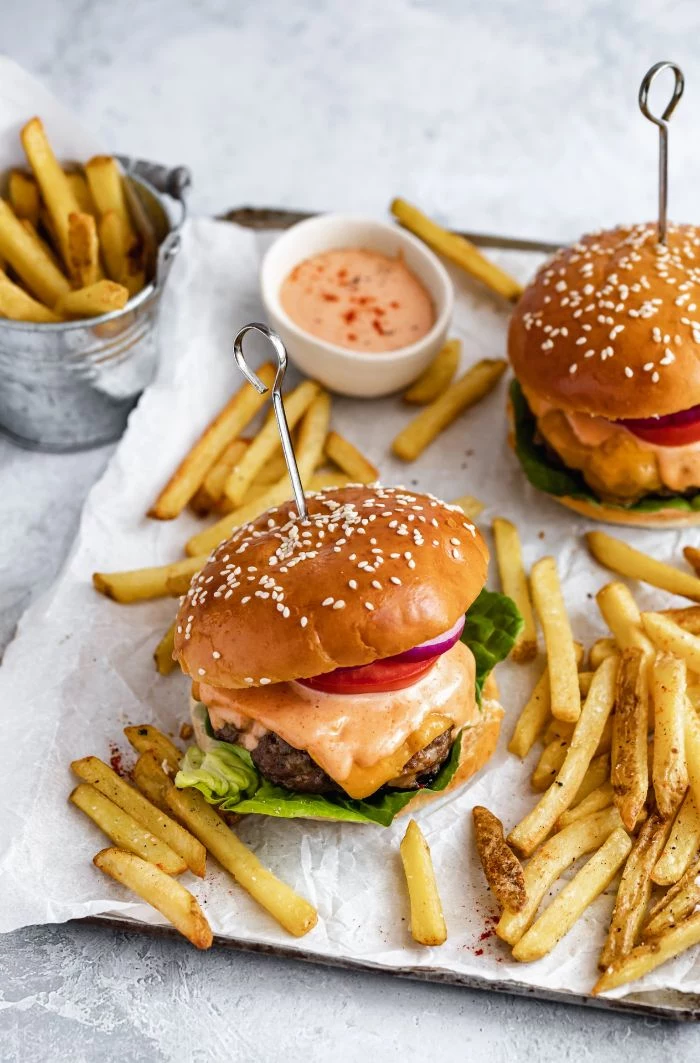
The Dimple Trick: Before you cook your patties, press a small, shallow indentation into the center of each one with your thumb. This simple step prevents the burger from puffing up into a dome-like shape as it cooks, ensuring it stays flat for even cooking and easy topping.
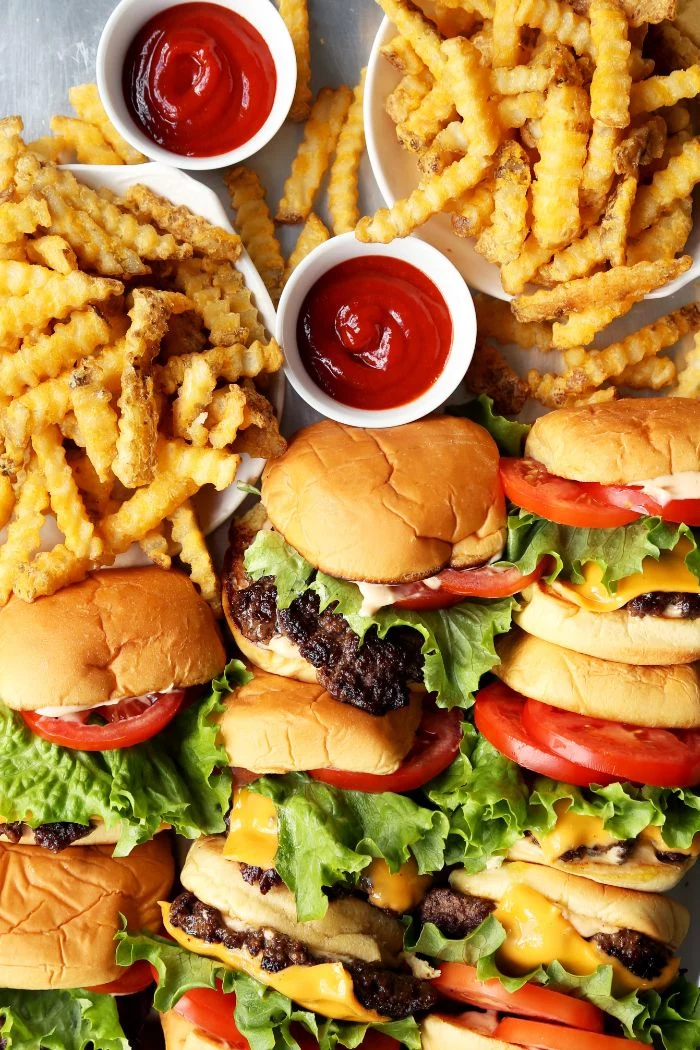
Forget the pre-ground turkey that comes in a tube. For a turkey burger that isn’t dry and bland, buy ground turkey thigh meat, which has a higher fat content. Then, add a secret weapon for moisture: finely grated onion or zucchini. Squeeze out any excess water from the vegetable before mixing it gently into the meat along with your seasonings.
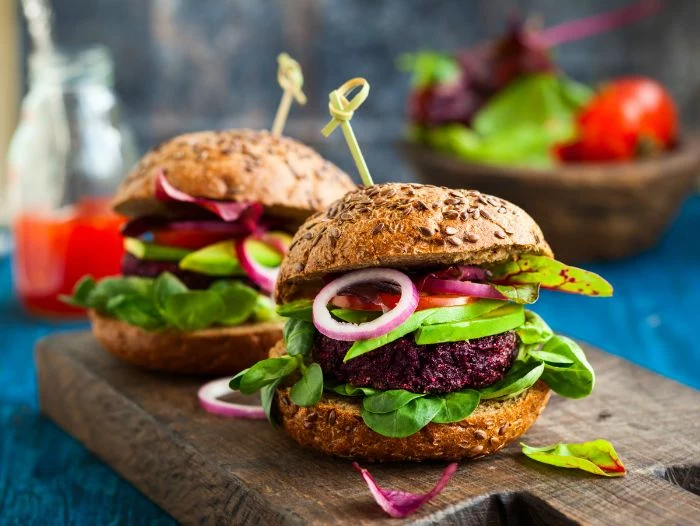
When should I salt my burger patty?
This is a major point of debate, but for the best texture, salt the exterior of the patty *just* before it hits the heat. If you mix salt into the ground meat ahead of time, it will begin to dissolve the proteins, resulting in a texture that’s closer to sausage—firmer and springier, rather than tender and crumbly.
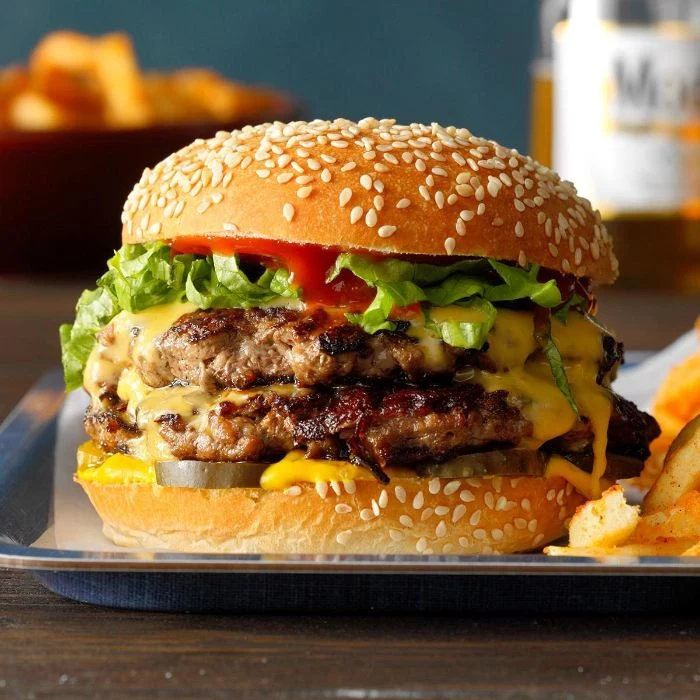
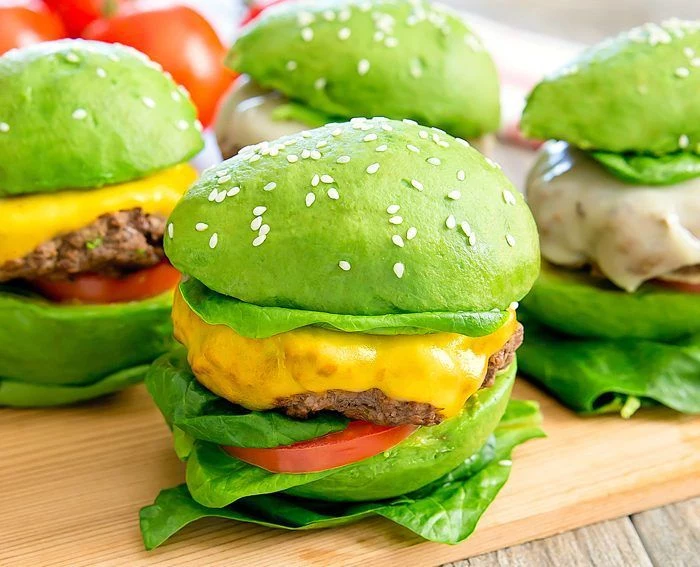
- They stay incredibly cold until the moment they hit the pan, which helps the fat render properly.
- They allow for an incredible Maillard reaction, forming a superior crust.
- They cook from the outside in, leaving a perfectly juicy center.
The secret? Cooking from frozen. It sounds counterintuitive, but many burger aficionados swear by cooking high-quality, well-formed patties straight from the freezer onto a hot skillet for the ultimate crust and texture.
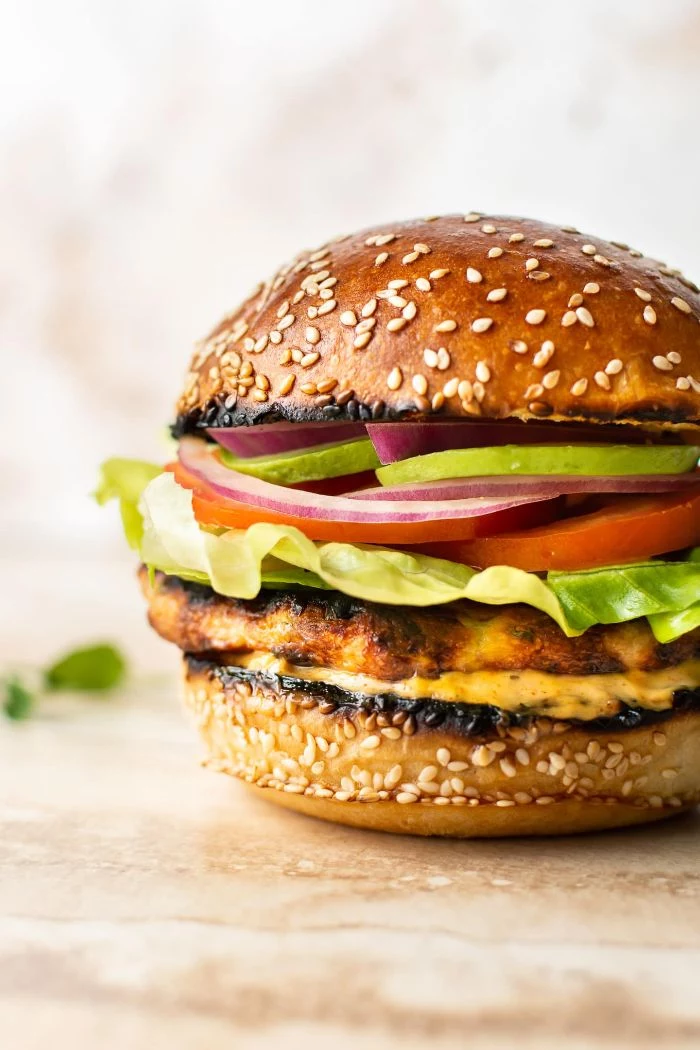
Think beyond the standard lettuce and tomato. Elevating your burger can be as simple as adding one unexpected topping that provides a new texture or flavor profile.
- For Crunch: Crispy fried onions or even a handful of potato chips.
- For Sweetness: A dollop of fig jam or some caramelized onions.
- For Acidity: Pickled red onions or spicy kimchi.
- For Richness: A fried egg or a smear of goat cheese.
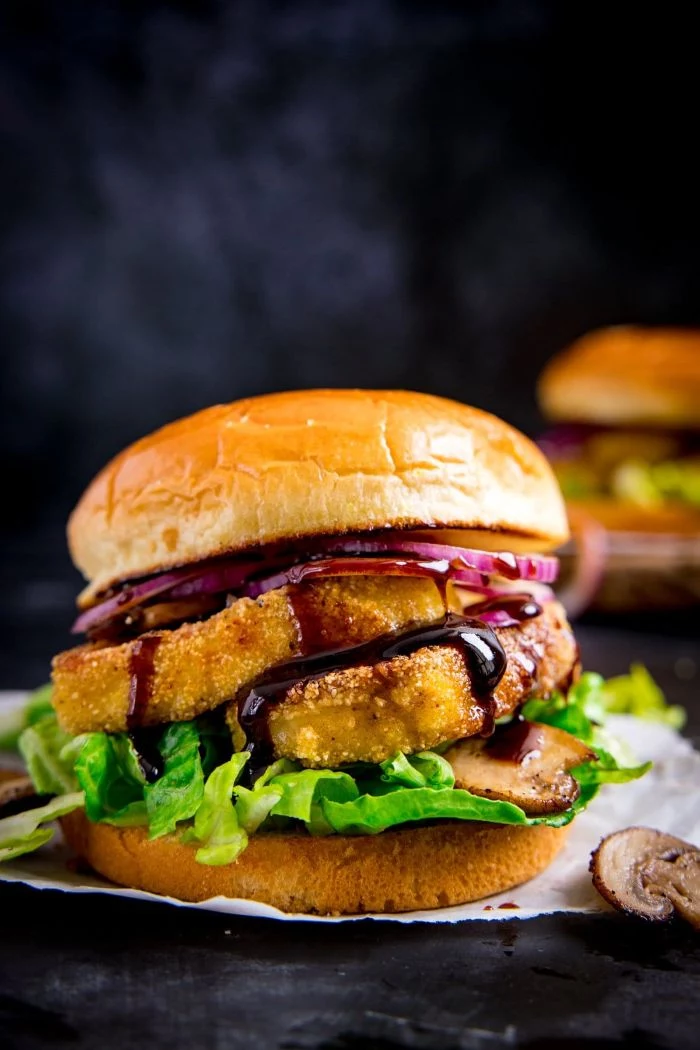
The single most important moment in a burger’s life might be when it first hits the pan. For this, your ground beef must be refrigerator-cold. If the meat warms up to room temperature, the fat will begin to soften and smear when you form the patty, and it will render out too quickly in the pan, leading to a dry burger.
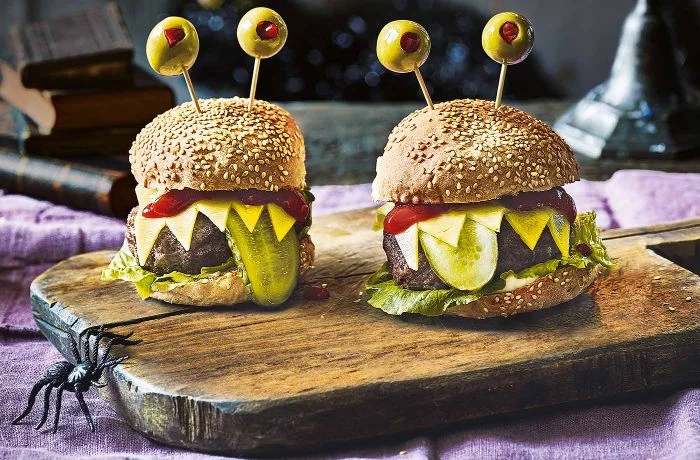
Cast Iron Skillet: Offers unmatched surface contact, creating a deep, even, wall-to-wall crust. The fat renders and the patty essentially fries in its own beefy juices, a process called convection. This is the key to the smash burger.
Outdoor Grill: Imparts a smoky flavor from charcoal or wood that you can’t replicate indoors. It allows fat to drip away, which some prefer, but you sacrifice that perfect crust for char-grilled flavor.
For pure beefy flavor and texture, the skillet wins. For a classic backyard BBQ vibe, fire up the grill.
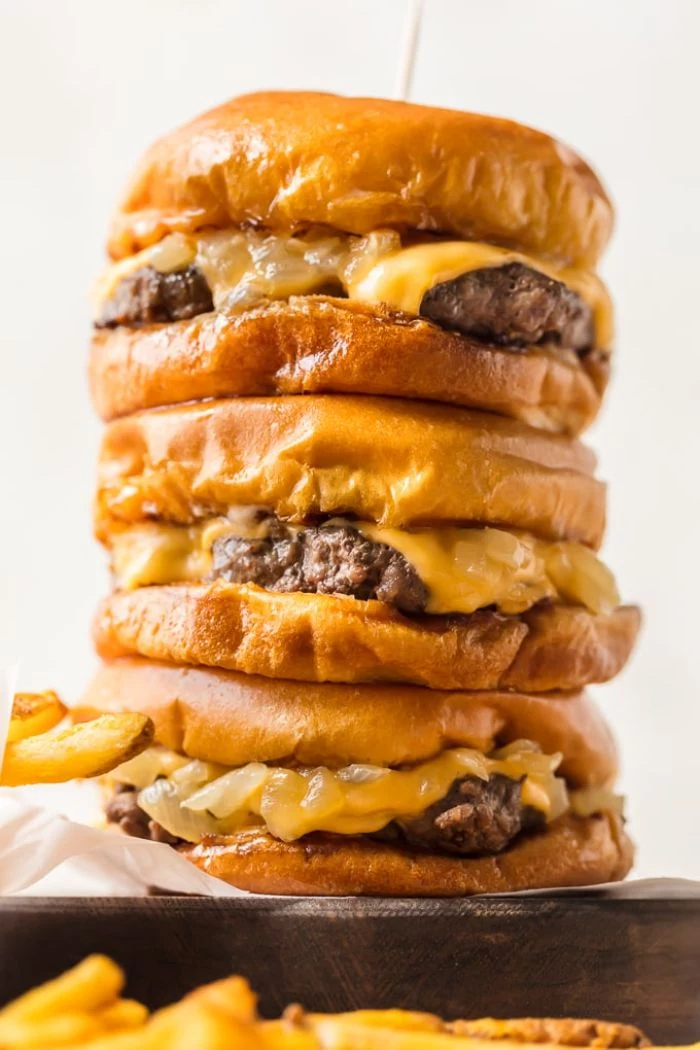
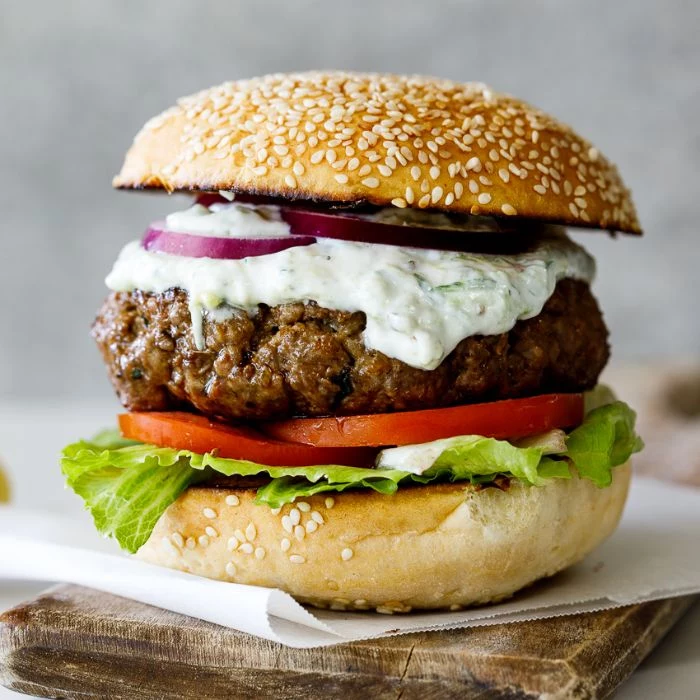
In the United States alone, it’s estimated that 50 billion burgers are consumed annually.
This staggering number shows just how much we love this simple sandwich. It also means that small improvements in technique—like choosing the right meat blend or toasting your bun—can elevate a huge number of meals from mundane to memorable. You’re not just making a burger; you’re participating in a national pastime.
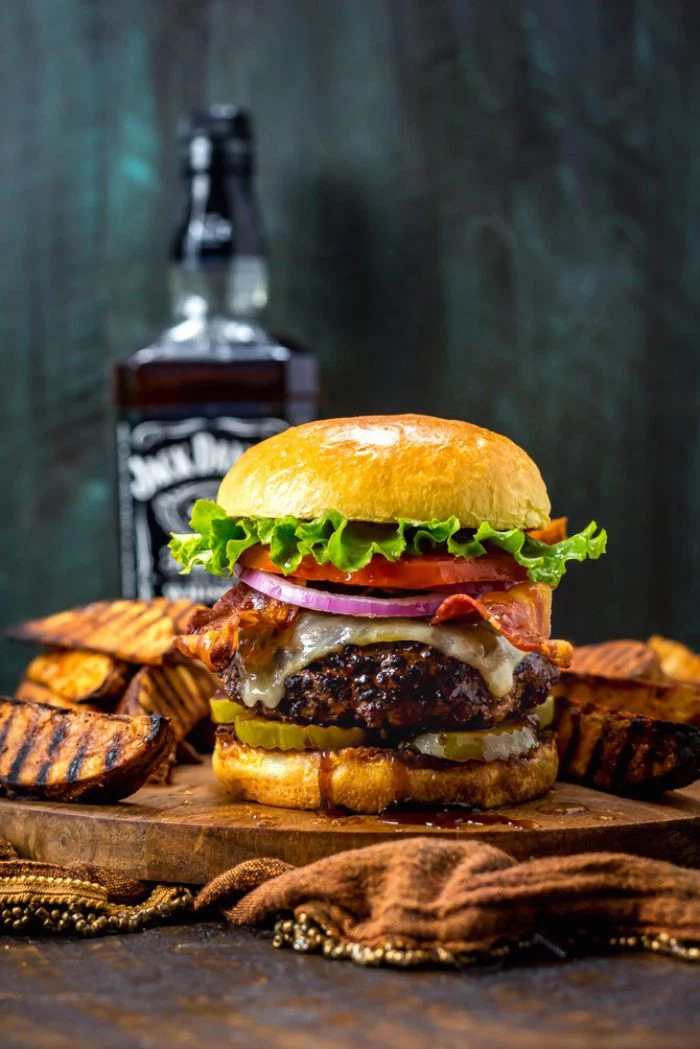
Your best tool for a perfect burger isn’t a fancy grill or a secret sauce recipe; it’s a good relationship with your butcher. They can tell you what’s fresh, grind a custom blend for you (ask for coarse-ground 80/20 chuck!), and offer suggestions. They are the gatekeepers of quality, and their expertise is free.
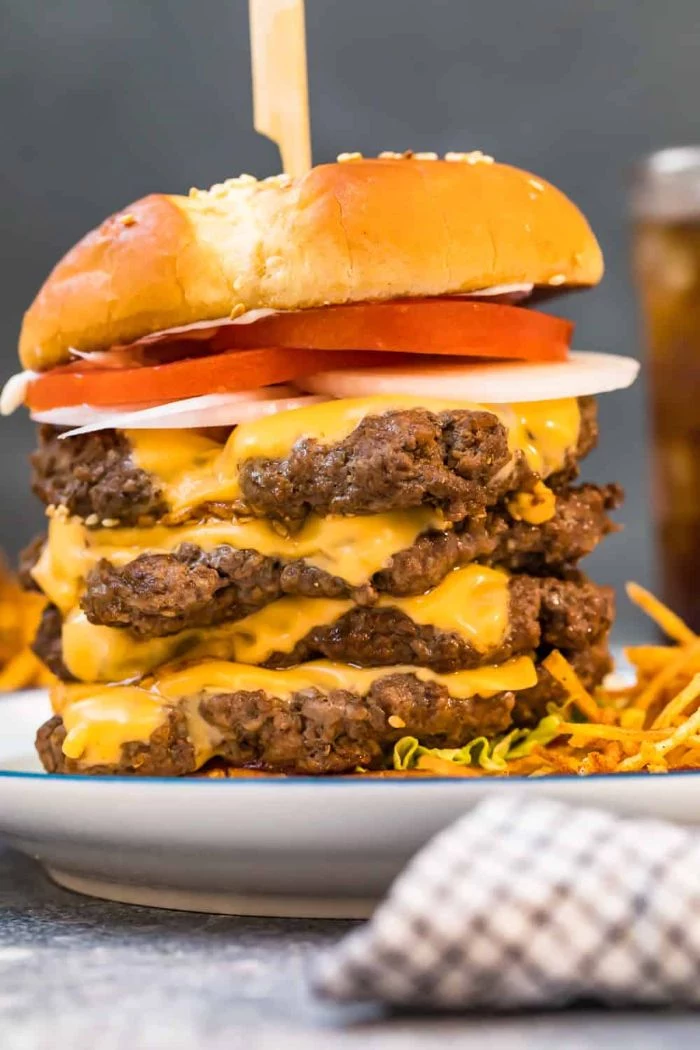
What about a great veggie burger?
The key to a veggie burger that doesn’t fall apart is a good binder and a ‘meaty’ element. Mix cooked lentils or black beans with sautéed mushrooms and onions for a savory base. For the binder, use breadcrumbs and a ‘flax egg’ (one tablespoon ground flaxseed mixed with three tablespoons water). Don’t forget umami-rich ingredients like soy sauce or nutritional yeast to mimic meaty depth.
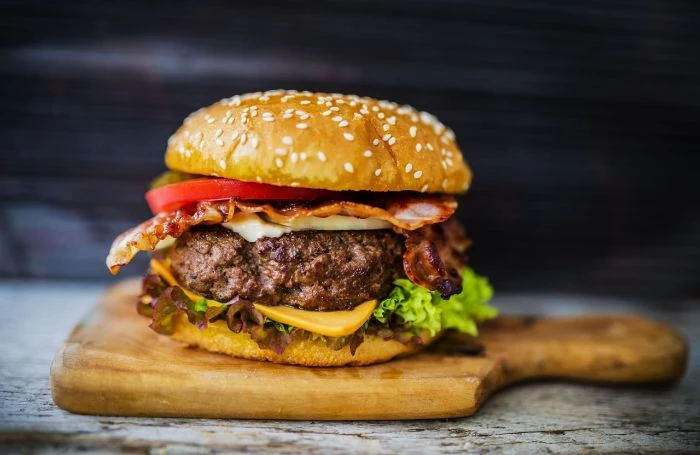
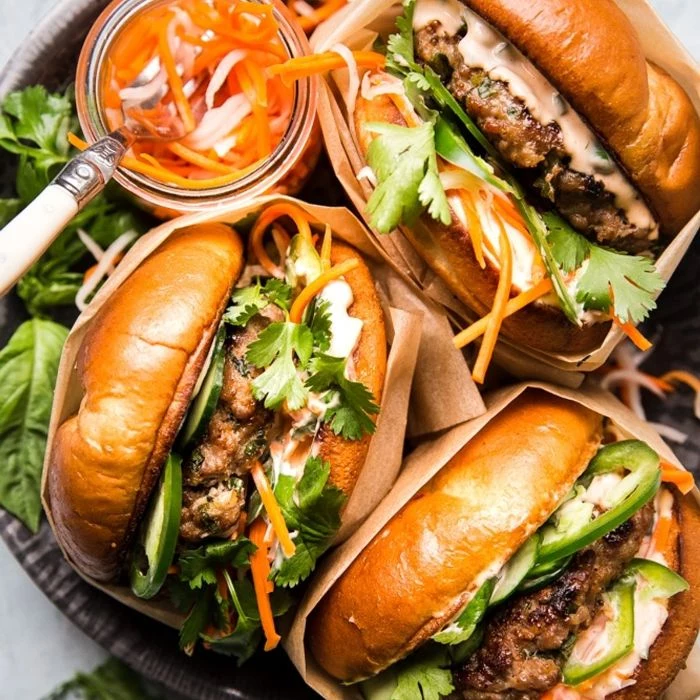
The fatal flaw: Overworking the meat. When you’re forming your patties, handle the ground beef as gently and as briefly as possible. The more you knead and compact it, the more you develop the proteins, resulting in a tough, dense, and rubbery burger. Think tender, not tough.
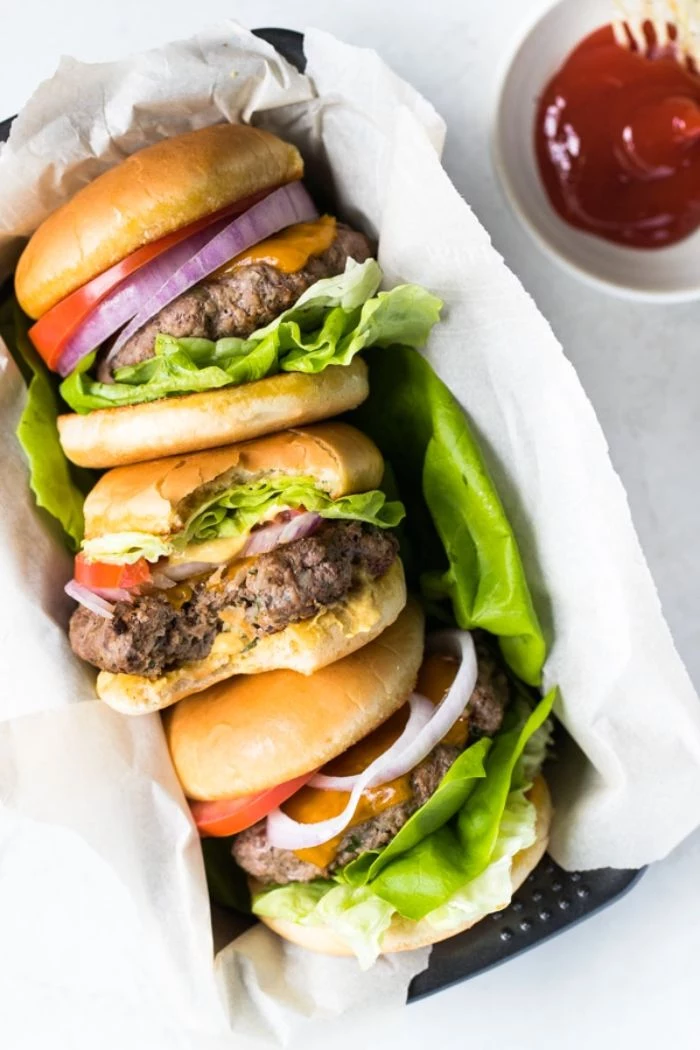
For an instant flavor upgrade, try making a compound butter to melt over your finished patty. Simply soften a stick of butter and mix in your favorite flavorings. Think garlic and parsley, blue cheese and chives, or even chipotle and lime. A small pat placed on the hot burger just before serving will create an incredible, self-saucing finish.
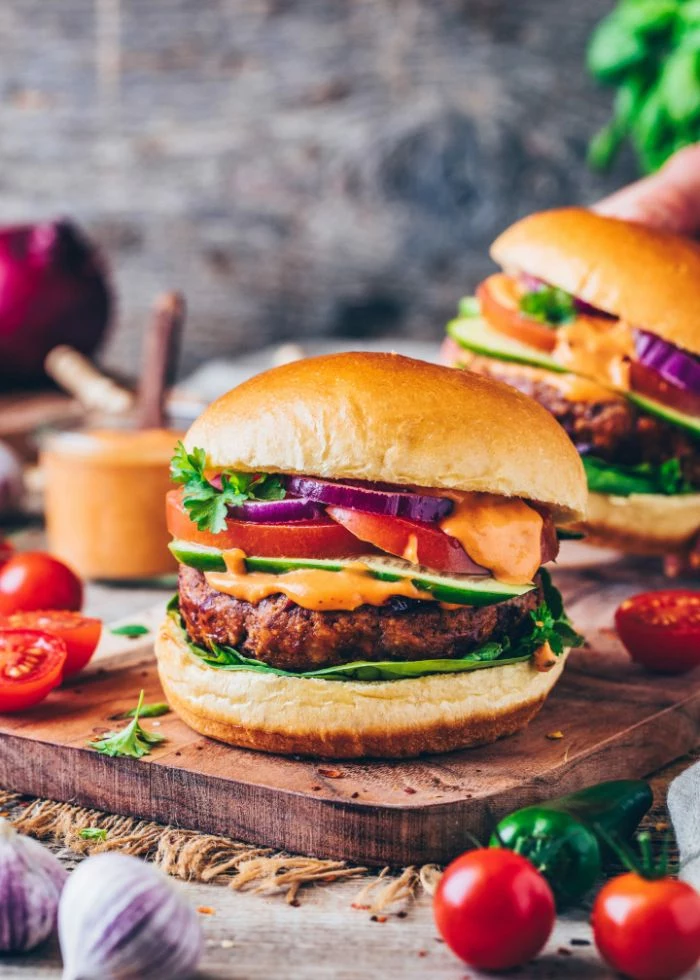
The onion is a burger’s best friend, but its preparation changes everything.
- Raw: A thin slice of red onion provides a sharp, pungent bite and crisp texture that cuts through rich cheese and meat.
- Grilled: A thick slice, grilled until tender with slight char marks, offers a milder, sweeter flavor.
- Caramelized: Slowly cooked in butter for 30-40 minutes, these become a sweet, jammy condiment that adds incredible depth and luxury.
Forget all the fancy spice rubs. For a pure, unadulterated, beef-forward burger, all you truly need is coarse salt and freshly cracked black pepper. Be generous and apply it to the outside of the patty right before cooking. The salt helps form that irresistible crust, and the pepper adds a simple, classic warmth. Let the quality of the meat shine.










